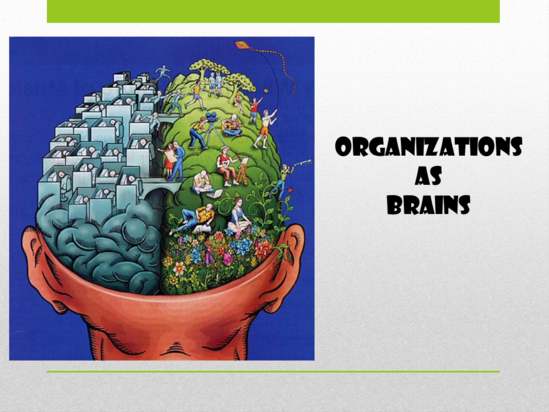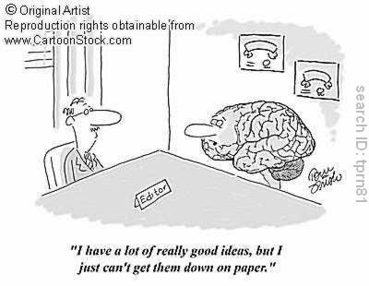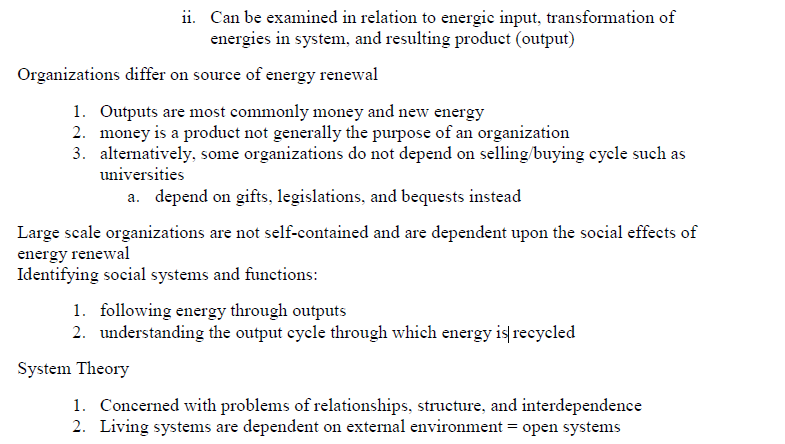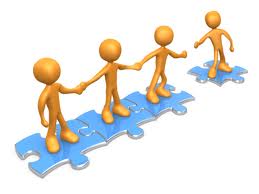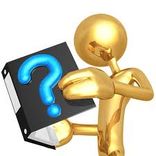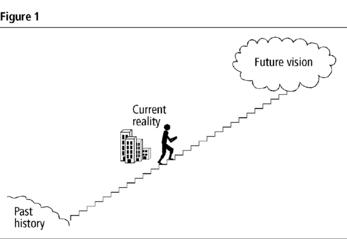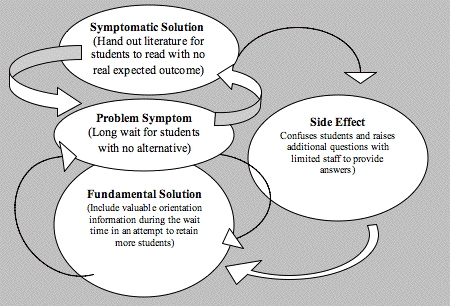Class Session 7
Austin, Aimee, Anne, Marylou, Melinda
Topic Summary:
This week’s readings and class discussion revolved around the concept of “Organizations as Brains.” The authors note a wide variety of connections between the structures and functions of the human brain and the organization and governance of groups. Morgan (2006) draws upon three such comparisons: information processing capabilities, adaptability to changes aka the ability to learn, and holographic abilities. Katz & Kahn (1996) discuss the concept of organizations as open systems, focusing on energy inputs and outputs, but also on how organizations learn and change over time. Kezar (2005) examines learning and organizations, specifically comparing the concepts of organizational learning with learning organizations. Finally, Senge (1990) details specific organizational recommendations for creating a learning organization with great focus on the role of leadership in that process. One trend across the readings and class discussions was the focus on how organizations “learn” and thus change over time as a way of adapting to new situations.
Synthesis of Organizations as Brains
A concept that ties all of the readings and class discussion together is learning. Each of the authors addresses how organizations adapt to current realities aka “learn.” This provides great insight into how we think about organizational learning or learning organizations and how these concepts can be implemented into the organizations that we work with. Additionally the authors provide critiques and limitations of organization as a learning entity.
When we think about the brain one of the first thoughts that comes to mind is the brain’s close association with thinking and the learning process. Our brains enable us to take a variety of external stimuli, process them and make meaning from them. We adapt as a system and make changes based on the information processed by the brain. We see the same principle in both Morgan’s (2006) and Katz & Kahn’s (1996) discussion of organizations. Both authors discuss the strong connection between this environmental information and how organizations are altered as a result. Morgan (2006) specifically discusses the use of single- and double-loop learning to detect information from the environment, evaluate that information, and then make corrective action as necessary. Katz & Kahn (1996) expand upon this concept in their discussion of “information input, negative feedback, and the coding process” as a key component of organizational systems. Additionally, they expand upon the desire for “steady state or homeostasis” and how organizations just like systems will adapt to external/environmental influences. These aspects of open systems are very similar to the single-loop decision making process described by Morgan.
Kezar (2005) also discusses the process through which organizations learn via a discussion of organizational learning and learning organizations. Kezar’s analysis of these two concepts relates very strongly to the learning processes described by Morgan and Katz and Kahn. Furthermore, Kezar discusses organizational activities and features which promote the learning process for organizations. There is an emphasis placed upon systematic problem solving, experimentation with new approaches, making meaning of past experiences and quickly and efficiently transferring knowledge and best practices within an organization. To be able to accomplish those learning tasks Kezar encourages organizations to be decentralized with a high degree of trust with strong relationships and solid communication between colleagues. These qualities help establish an environment that encourages the sharing of information and promotes appropriate risk-taking as a way of solving problems. Overall, he shares that it is important to create a learning culture with a shared vision for success.
Finally, Senge (1990) contributes to our understanding of how organizations learn by examining the role of the leader. One of the key roles for leaders is to build a collective vision and continue to sculpt that vision over time. A key element in setting the vision is ensuring that creative tension exists thus that there is an appropriate gap between the vision and the current reality that inspires the organization. Leaders must also challenge the existing mental models and through doing so create change and learning. Finally leaders must focus primarily at the systems level and focus less on the day-to-day. By doing so, they are able to take stock of the underlying trends and become a force for bigger change and a greater level of learning.
While the authors have established compelling arguments for learning organizations there are several areas for concern. Information sharing across organizations is vital to the learning process, yet there are many barriers to information sharing. While technology is greatly assisting in the communication of vital information within organizations, bureaucracy still remains in the way of the idealistic flow of information. Additionally, while there is a need for organizations to view the learning process as holistic and system-wide, it is difficult for individuals to expand their view beyond their single scope. Organizations need to work on investing all individuals in the greater goals and vision to ensure a successful learning process. Finally, organizational learning is complicated and there seems to be a common underestimation of its complexity. There needs to be a greater understanding at all levels about the complexity of the learning process. To best accomplish organizational learning, groups must fully realize the challenges they must overcome to ensure the greatest outcomes in the learning process.
Morgan (2006) Chapter 4 - Organizations As Brains
Gareth Morgan uses the brain metaphor because of several characteristics.
The brain displays holographic qualities. That is, multiple areas of the brain are able
to reproduce multiple functions, at least to some level of precision. The brain also has
areas that specialize in particular skills. The complexity of brains raises many
possibilities when viewing organizations as brains. Morgan discusses these possibilities
in the three interconnected areas outlined below. For a detailed summary of Morgan's chapter on the organization as brains and definition of key terms, click BRAINS.
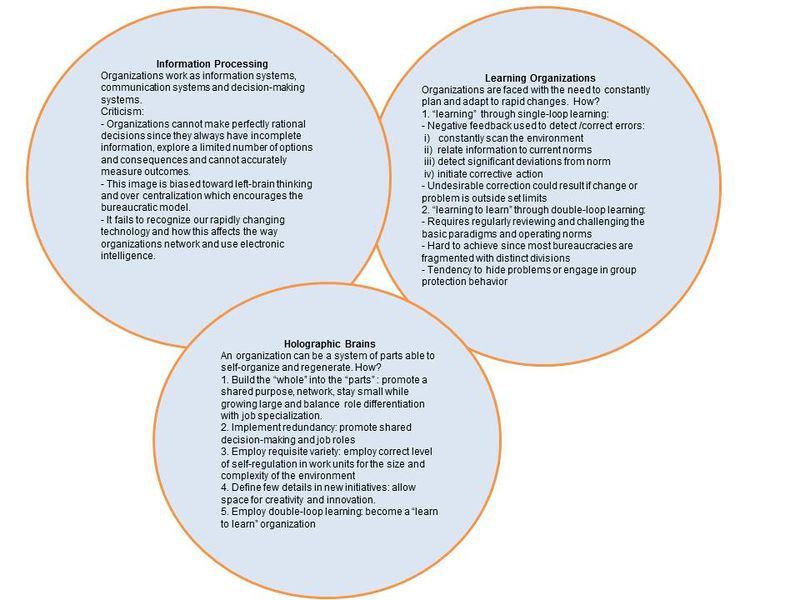
Katz & Kahn (1996) - Organizations and the System Concept
| Common Characteristics of Open Systems: | Important Facts: |
| Importation of Energy | * Open systems important some energy from external environment- must rely on renewed supplies of energy from other sources * i.e. personality is dependent upon external world for stimulation- deprivation can lead to disorganization |
| The Through-Put | * Open systems transform the energy in the system in ways that benefit the system and allows work to be done |
| The Output | * Open systems export products into the environment (products are created) |
| Systems as Cycles of Events | * Cyclical energy exchange – many small cycles can make up large ones * Energy reinforcing the cycle of activities can come from exchange of product in world or from the activity of the cycle * The problem of structure can be observed in the arrangement of units Structure can be found in an interrelated set of events * which return upon themselves to complete/renew cycles * Activities promote unity in the closure of the cycle—the chain of events |
| Negative Entropy | * Open systems must acquire negative entropy * All forms of organization move towards disorganization By importing more energy from its environment then using the system can store up energy for unproductive times * Systems maximize profits while they can- seeking to improve position by increasing profit margin |
| Information Input, Native Feedback, and the Coding Process | * The inputs into living systems consist of energic materials which are altered in the cyclical process Inputs also help create character of organization * Negative Feedback- enables the system to correct deviations from course (simplest) If there is no corrective device, too much energy will be expended and system will stop working * Selective energic inputting- only react when attuned |
| The Steady State and Dynamic Homeostasis | * Adding energy to stop entropy occurs to create consistency so that organizations are stable No true equilibrium; rather a continuous cycle of energy from environment/system without changing the character of the system React to changes and assimilate them without creating mass system change In preserving the character of system the structure will import more energy than required * Most common type of growth is multiplication of same type of cycles- change in quantity * Qualitative change can occur: supportive subsystems to develop and where quantitative changes cause qualitative changes |
| Differentiation | * Open systems move in the direction of differentiation and elaboration (growth) “Progressive mechanization- interaction of various dynamic forces which entails use of regulatory feedback” (282) |
| Equifinality | * Systems can reach the same end product by multiple paths |

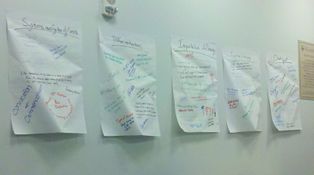 Classroom discussion with Katz & Kahn
Classroom discussion with Katz & Kahn
Are you a social thinker? Want to read another article by Katz & Kahn? Click | here!
Kezar (2005) What Campuses Need To Know About Organizational Learning and the Learning Organization
Senge (1990) - The Leader’s New Work: Building Learning Organizations
| Additional Information to Chew on.... | But wait, there's more... |
| Organizational Learning vs The Learning Organization Our class activity of identifying the similarities and differences between organizational learning and the learning organization helped differentiate the two. At first glance, Adrianna Kezar's description of the learning organization places it out of reach as she refers to it as a "fad", "a contested area", and "an idealized model." After writing down the differences, Kezar's version of the learning organization is clearer. She holds the title to a very high standard and set of activiites; well beyond those seen in organizational learning. After reading Morgan as well, however, we see a different set of standards for the learning organization. Morgan eludes to double-loop learning as moving toward "learning to learn," while Kezar views it as just another method employed in organizational learning. |
From theorist to theorist, there appears to be overlap in the principles and definitions for organizational learning and the learning organization. It's no wonder the terms conjur up confusing gray areas. Could it be that the learning organizaion is still making its transition from an "idea" to a "reality?" How well defined were such concepts as space exploration or the internet, until we could see it and use it? |
| Katz and Kahn Grafitti Activity It is difficult to view any organization, let alone an active college setting, as an “open system.” The terminology used by Katz and Kahn to describe an organization is lifeless and foreign when compared with more recent metaphorical images. The nine characteristics outlined in the article have a scientific nature and might gladly have been ignored had it not been for this exercise in class. The informal setting of the activity allowed us to write examples and descriptions at our own pace, as we became comfortable with each characteristic. Intermittent small group discussions moved many of us toward a better understanding of such characteristics as “negative entropy” and “coding process.” The examples we wrote for each characteristic were varied depending on the writer’s perspective. So, this activity served two purposes in the end. It provided realism and clarification to Katz and Kahn’s organization as a system. It also emphasized the reality that members of any group have varied perspectives in viewing an organization and all its parts. Even one of the simpler characteristics, "output," elicited a wide variety of responses. |
Example: The Output What product(s) are exported into the environment from an institution of higher education? Degree?/GPA? Practical knowledge Global thinkers Wisdom Life experiences Loyalty to institution Engaged leaders Professional development Great art and waste are both output Creation of new ideas/problems |
| Andrew R. McRoberts, '81, President, The Society of The College]| Eugene R. Tracy, Interim Dean of Arts and Sciences at William and Mary | Some of the opposition is based on incomplete information but others express a sincere concern that the faculty committee is really "watering down" the general education requirements. How will the curriculum steering committee handle these external pressures? The characteristics of an open system are playing out here; how will William and Mary adjust, if at all, to the characteristic Katz and Kahn call "information input, negative feedback, and the coding process." Stay tuned: this outside pressure also invokes questions concerning governance. Is curriculum review and change strictly an internal concern under faculty governance as stated by Eugene Tracy? Or, considering the college is tied to the donations of alumni and greater college community, should they have more influence? Our March 28 topics expound on this dichotomy and other issues regarding governance. |
| Vision Statement/Left-Hand column activity This activity revealed that many students in our class were not aware of the Mission or Vision statement of The School of Education at William and Mary. However, in broad terms, the activity made our groups realize that we typically identify very general goal statements that are hard to adequately define. Some members of our group over-defined their goals, creating extensive and encompassing visions. However, there were more people that did not "dream big" and thus created easily attainable dreams for the School of Education at William and Mary. Thus, our groups did not have the creative tension that was described by Senge. This lack of creative tension can be linked directly to a disconnect between individuals identity being strongly linked with the College of William and Mary/School of Education. If perhaps, the students would have a strong identification with this SOE there would have been a higher degree of creative tension. This exercise really helped our group see the assumptions that we make regarding the vision statements of WM in comparison with other institutions, departments, and fields. |

|
| !! William and Mary: Showing Signs of the Learning Organization As Bob Dylan once sang, “For the times, they are a changin’." A curriculum change,that is, here at The College of William and Mary. The current general education requirements were established over twenty years ago when the environment was much different. Reduced state funding and a shift in expectations for graduates are just two reasons for the curriculum revision. The current system of “gen. ed.” requirements is unsustainable and ineffective in preparing today’s graduate for the current workforce. In April, 2011, a steering committee started with discussions about what type of Liberal Arts Curriculum the college should have. By February, 2012, we had our first glimpse of the proposed new curriculum, although it is still in a skeletal form with few details. We believe the steering committee employed many of the concepts discussed in this week’s topics of organizational learning, the learning organization and organizations as brains. The table below summarizes some of the observed applications. | |
| Steering Committee Actions | Application of Concepts |
| They initially questioned: “What kind of Liberal Arts Curriculum would we like to create? Will we create something new or adjust what we have?” Focus groups of faculty and students also met to discuss where we see ourselves in relation to the Liberal Arts and what our vision is over the next 20 years. | Existing assumptions are being questioned and challenged; do they align with the changing environment? This creates an opportunity for organizational learning as we work to understand and communicate honestly. This is important if transformational change is to occur. (Kezar) |
| Subcommittees were formed for data collection, institutional memory and research on other models. | These are examples of other concepts of organizational learning: Overload, Organizational Memory and Theories-in-Use. The search for new knowledge begins by assessing past performance and using the data to correct actions. Researching other undergraduate curriculum models also characterizes a stepin becoming a learning organization. (Kezar) |
| The Curriculum Review Steering Committee was given little initial direction. There is latitude inside the accreditation requirement of 30 hours of general education coursework. | A key principle of creating a holographic design in an organization is that of “minimal specs.” Lack of detail and direction might intimidate members with an “old bureaucratic mind-set” but it provides the space needed for innovation. (Morgan) |
| The curriculum committee presented the new concept of the College Curriculum to faculty for discussion. | This new vision of curriculum expectations is very different and bound to generate some natural tension. This creative tension can create the energy needed, however, to move our current reality in the direction of the vision. The discussion provided a platform for faculty to reflect on our purpose and core values. (Senge) Sharing the vision is also key to a holographic design. (Morgan and Senge) |
| A pilot program and/or small scale version of the College Curriculum will precede any broad changes. They are considering implementation in disciplines where the change is most natural and success is most likely first. | Start small and in an area with the greatest potential for success rather than trying to change the entire institution at once. This employs one of the guidelines to successfully implementing “the fad of the learning institution.” (Kezar) |
| The steering committee has several different ways to achieve an improved the curriculum. | Move to a 4 credit system (only take 3-4 classes a semester); Delete the foreign language system; Restructure GRE requirements to fit the needs of modern students. (Katz & Kahn) |
| The Curriculum Committee researched peer institutions. | The Committee engaged in systems thinking through identifying common trends among other institutions and attempted to develop a curriculum to maintain competitive advantage. (Senge) |
Other Resources
| The Challenge of Organizational Learning - article from the Stanford Social Innovation Review on the barriers to organizational learning and strategies for overcoming them
| On Organizations as Brains by Espen Andersen - summary of Morgan's chapter with connections to cognitive science as an expansion of the metaphor
| Transforming Organizations into Social Brains - Peter Krause, a German professor and researcher of neurophysiology and experimental psychology discusses the use of his research to transform a business. (video below is Part 1 of 7 of him talking about his work) media type="youtube" key="lv6qLzKW7zs" height="315" width="420"
| Society for Organizational Learning - good resource to find out more
Quote of the Day: Group: Shouldn't these terms be opposite? (Organizational Learning +Learning Organizations) Anne: It makes sense to me. I'm left handed!
